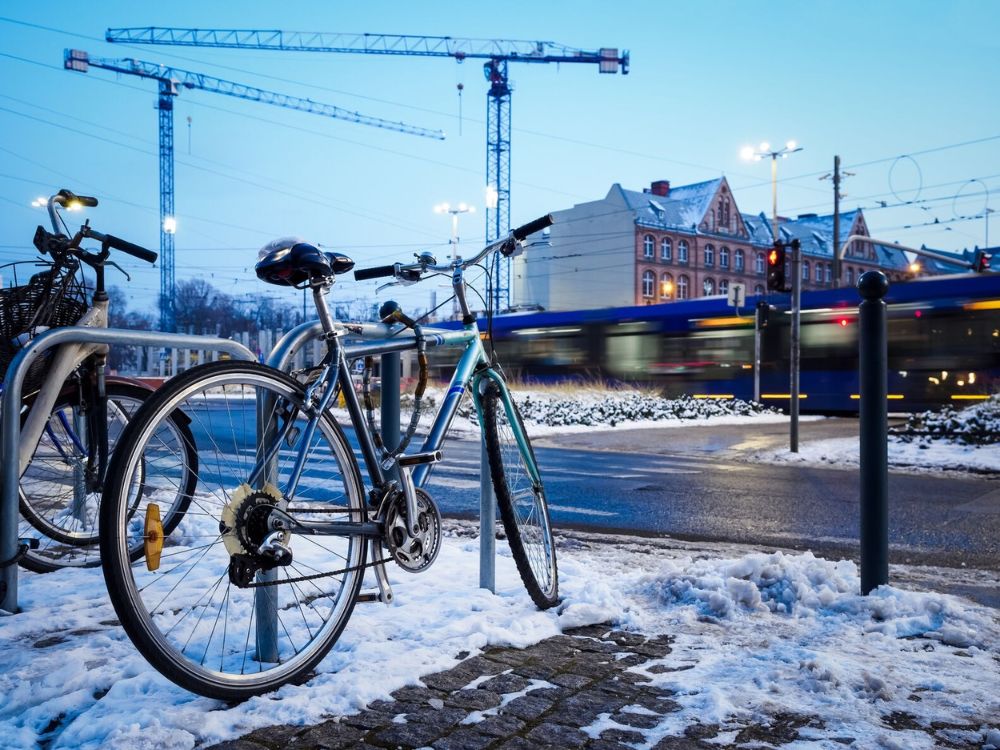1. Beware of the black ice
Black ice is just like regular ice, only much, much worse. It has all the characteristics of regular ice, with the charming addition of being completely invisible. Black ice is a thin cover of extremely smooth frozen water on top of a surface. It just so happens that the streets are one pretty large surface, and water tends to freeze when temperatures hit below 0°C. So, usually, when there is light rain the night before or a drizzle followed by cold weather, spots of black ice appear.
Naturally, this see-through layer of ice is extremely dangerous for anyone on the road. However, black ice is truly a menace when it comes to cycling. If you go into a corner at a relatively high speed and either of your wheels touches such a spot, you will hit the ground without any chance to bail. In normal circumstances, you can put out a foot to keep your balance, jump off the bike or even manage to gain control. With this slippery cover, however, there is nothing that can save you. The best thing to do is just to fall as safely as possible. Note that if you are riding on roads, you should be extra careful, as black ice prevents drivers from stopping.
To avoid this predicament, all you need to do is drive extra carefully when temperatures are below zero and there is moisture on the road. Slow down at every turn, be aware of other road participants, and if there is a conflict situation, it’s best to give way than regret it afterwards.
2. Always have your lights on
Being visible in winter is crucial. Other participants in traffic should see you from afar, as stopping is way harder. Thus, you need to always have some bright clothes on yourself. But just to be sure you won’t be missed by anyone, put your lights on regardless of whether it’s day or night. During the day, it’s best to use a blinking light, as it attracts much more attention. While on gloomy days, that is a must. In sunny weather, having some blinking lights on your bike is also a good idea. During the shortest days, the sun is barely above the horizon, rendering everyone driving against it blind. Having a blinking red light on the back of your bike will draw attention and keep you safe. Regardless of what anyone says, your safety is much more precious than the few bucks you will save on battery for the extra consumption.

3. Do not forget to drink
Your drink of choice while cycling should be tea. A thermos or two filled with hot beverages will give you all the needed hydration during your ride. Keep in mind that you usually don’t feel thirsty when you are cold. That doesn’t mean, however, that you don’t need water. Make sure to have a couple of gulps every 30-40 minutes. Also, make sure you get warm or, at worst, a lukewarm liquid. This will not only restore your temperature balance but will give you some extra energy to finish your route.
4. Walk while resting
While commuting is generally the main reason people cycle during winter, certainly, there isn’t a lack of enthusiasts who enjoy their cycling exercises as well. If you are determined to have some longer rides just for fun, make sure you have a good place to rest along the way. It might be a coffee shop, a tavern or even a public building like a train station or others. The main point is to be in a warm place while you are relaxing. Alternatively, if you have no such place along the way when you get tired, simply get off your bike and continue walking. Your body and muscles shouldn’t get cold. It’s bad for your health, heart and joints. So if you need to take a breather, just push your bike for 5 minutes until your pulse normalises and get right back on the bike after that.
5. Don’t go riding in extreme colds
Finally, you should know when to restrain yourself from riding. While at minus ten, you can endure if you are constantly moving, the past decade has shown some pretty strange weather with the arctic cold coming down from the North pole. That’s right. The North can offer much more than a jolly fat man who didn’t bring you that new bike you’ve been asking for. So when temperatures hit 20 below zero, you should definitely avoid going out at all. Not to mention with your bike. The extra speed will intensify the cold, and you might even damage your skin in some severe cases. So know your limits and don’t risk yourself.




